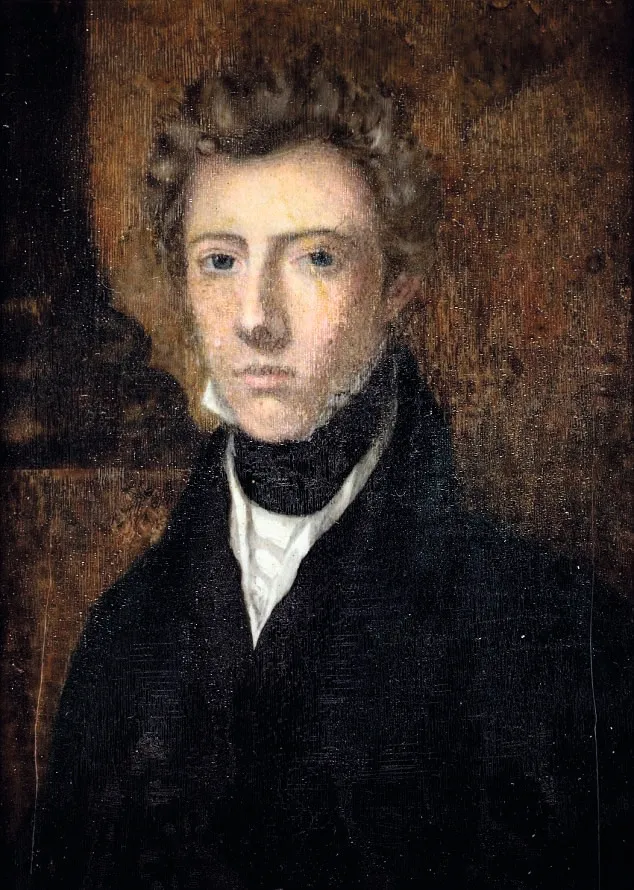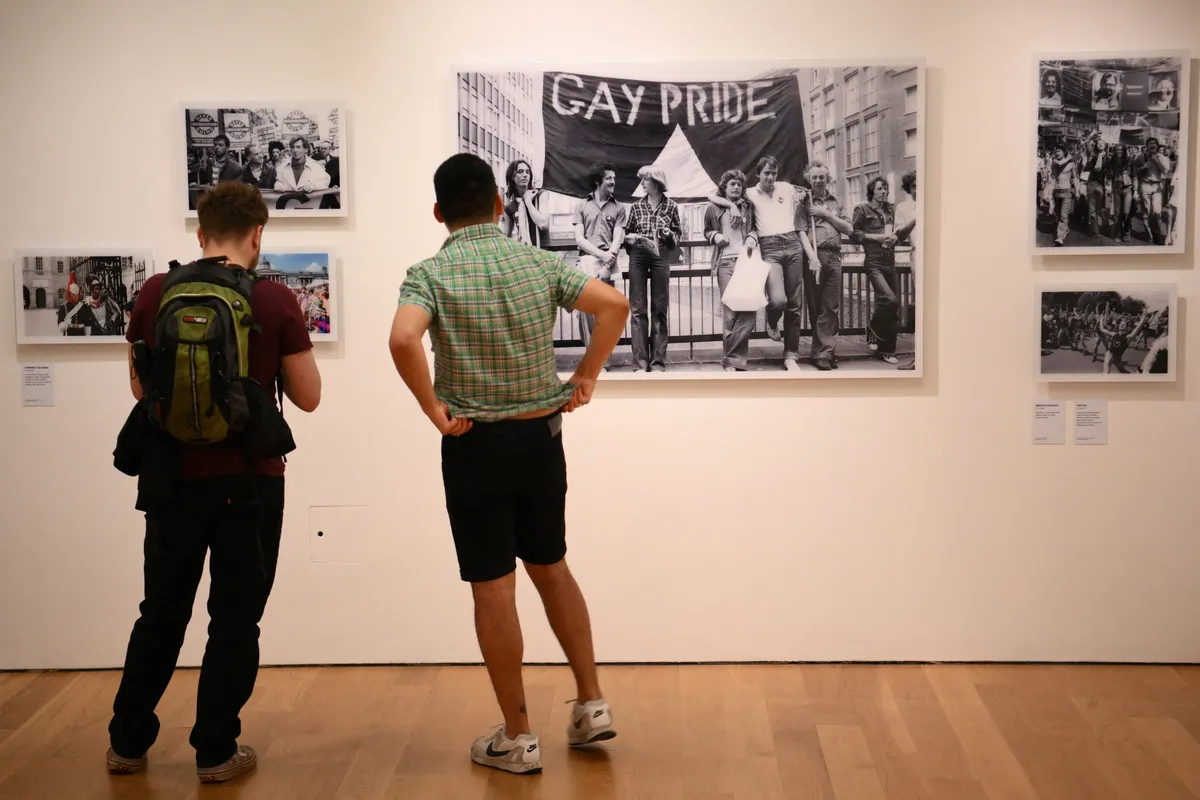Given the level of discrimination that still exists against the LGBT community, it’s easy to forget how far British society has come. For much of its history the community was shrouded in secrecy. When we delve back to the Victorian era we can begin to understand that this was a clandestine world of underground meetings and slang shrouded in euphemism that it is possible to interpret and decipher.
Much of the prejudice against same-sex relations originated in Christianity’s role as Britain’s main religion from the late 8th century onwards. Initially, same-sex relationships per se were not outlawed – it was the sexual acts between men that were prescribed (there have never been laws that prohibit female homosexuality).
The first time that this discrimination was enshrined in law instead of being tried by church courts was the 1533 Buggery Act, which made anal sex (together with sex with an animal) punishable by death. The first person to be executed under this law was Walter Hungerford, 1st Baron Hungerford of Heytesbury in 1540. The last people to be executed before the penalty was changed to life imprisonment were James Pratt and John Smith in 1835.
The most radical shift in how gay people were treated came in 1885 with the passing of the Criminal Law Amendment Act. This went further than criminalising the act of anal sex – which was quite difficult to prove – by outlawing “gross indecency” in both public and private. This made it easier to prosecute gay men, because the definition of gross indecency was vague and open to interpretation. The Act passed during a late-night session of the House of Commons with few MPs present, and for generations enabled men to be arraigned for the smallest indiscretion on minimal evidence.
The Act signalled a paradigm shift in social attitudes. Any tolerance that might have existed in the late Georgian period and the first half of the 19th century now disappeared. It was this Act that was used to prosecute both the writer Oscar Wilde in 1895 and the computer scientist Alan Turing in 1952.

Safe havens
The bawdy 18th century and early 19th century are often regarded as a high point for the acceptance of same-sex relations and what we would now call transgenderism that would be clamped down upon following 1885. One potentially safe haven for gay men to meet in the 18th and early 19th century was ‘molly houses’. ‘Molly’ was a derogatory term that meant either gay or feminine men. While there was a chance that the houses could be raided and the penalties were severe, their locations were well known.
Raids often took place based on a tip-off from neighbours who had an axe to grind or in relation to another crime; it is clear that there wasn’t a concerted effort during this time to close down molly houses. Arguably, there was a significant tolerance for this gay subculture. According to historian Rictor Norton, London’s ‘molly districts’ included the arcade of Covent Garden, the south side of St James’s Park and the bog houses (toilets) of the Savoy. Moorfields, Lincoln’s Inn and the Royal Exchange were other places around the capital where you could find molly houses.
Ned Ward’s The Secret History of London Clubs (1709, and freely available in a later edition from the Internet Archive) offers an open description of these houses suggesting that they were places of intrigue where the working class, the young and the old could meet and explore their sexuality.
Trouble with the law
In the press, there has been a long-held slur linking homosexuality to sex with underage boys. According to Norton, this stems from the fact that many older men would naturally encounter errand boys on the street. It was easier to pick them up than risk attending a brothel or propositioning a man of the same age. Younger boys would willingly go with an older man, especially for a small amount of money or a promise of beer. Also the boys were often from poor backgrounds and vulnerable, so if they made an allegation then their word would carry less weight with the police.
As Norton explains, “The streets of London swarmed with errand boys and porters offering to carry goods and packages and delivering messages for small change. These young men were happy to accept a drink and pub lunch at the expense of a friendly stranger. There are many documented instances of gay men picking up delivery boys, taking them to a pub, giving them a pint of beer and a meal, and then fondling them and, in many cases, persuading them to have sex. When such cases came to court, usually because they were overseen by a third party, the young men always claimed they were too drunk to make any objections.”
Equally, there were numerous instances of men hauled before the courts who claimed they had been set up. It was easy to make a case against someone by simply testifying to have witnessed the act. Before the introduction of CCTV or professional investigators, the trial came down to who the court was more likely to believe.
Of course, although we can find accounts of such criminal cases in court records and old newspaper archives, they only reveal LGBT ancestors who were caught breaking the law. They don’t offer an accurate picture of the extent of LGBT activity as a whole.
Events such as the Cleveland Street Scandal of 1889 – in which high-profile aristocrats were caught frequenting teenage boys at an address in Central London – reveal that by the late 19th century homosexuality was at least perceived in the minds of the public as a class-based crime, with the wealthy leveraging cash to exploit working-class children. This occurred in a period when the Government was intervening in children’s rights for the first time. In 1885 the Criminal Law Amendment Act raised the age of consent for relations between men and women from 13 to 16, five years after schooling became compulsory until the age of 10.
Blurring gender boundaries
Ward’s book includes suggestions of men wearing women’s clothing and using female pronouns when referring to themselves. Many early transgender men and women were not prepared to live their lives effectively as a lie pretending they had always been members of the opposite gender. Some wanted to crossdress, and others wanted to express themselves freely.
Crossdressing and transgender men and women would meet at secret events. One example is the Hulme Ball of 24 September 1880. Like molly houses, the event brought together a cross-section of society. According to a Manchester Guardian article, guests included stonemasons, travellers, chemists, clerks, publicans and a butler.
A temperance hall in Hulme, Manchester, was booked in the name of the Association of Pawnbrokers’ Assistants. Guests had to recite a password in a female voice to gain entry, and the windows were blacked out. The organisers also hired a blind man to conduct the orchestra, so that he could not see the guests. Despite these efforts, the newspaper reports suggest that somebody tipped off the police. The 47 attendees were convicted and fined £25 each.

Clues in divorce records
Divorce records sometimes hint that an ancestor might have been LGBT. Before 1858 obtaining a divorce required an Act of Parliament, a luxury afforded to only the wealthiest and most privileged – and a very public affair. However, the 1857 Divorce and Matrimonial Causes Act made divorce much easier. It would be rare to see homosexuality cited as the reason for the divorce, since the wife would implicate the husband in a crime. But we can read between the lines. For example, the divorce records of Frances Smith in 1893 against her husband give reasons of “frigidity and impotency or another defect of the parts of a generation”. This might be a euphemism for his being interested in other men.
Census records might also list men as “borders” living with a married couple. While this isn’t evidence within itself, it is worth questioning who unrelated individuals in the household are, and how they met your ancestor.
Case study: Dr James Barry

Army surgeon James Miranda Steuart Barry was born a woman but lived as a man. James attended university and worked as a surgeon across the British armed forces, ascending to the rank of inspector general of hospitals. This was not a career open to women at this time.
James performed the first successful caesarean section in the British Empire, and had a reputation for being stern and uncompromising. It is alleged that his behaviour shocked Florence Nightingale. His job involved inspecting the hospitals of the Cape Colony in British South Africa. He helped the local people by ensuring that they could access clean water, and clamping down on quacks selling fake cures.
James died in 1865; his birth gender was only discovered during a post-mortem examination. There is debate about whether he was truly transgender in the way we understand the term today, or simply dressed as a man to enable him to pursue his career. Such discussion overshadows his achievements as a reformer who improved the lives of many in the British Empire. You can find out more from the biography Dr James Barry: A Woman Ahead of Her Times by Michael du Preez and Jeremy Dronfield (Oneworld, 2016).
Resources

Queer Britain
Britain’s first museum devoted to the LGBT community opened to the public on 5 May.
British Newspaper Archive
Reports in local and national newspapers often provide greater detail about court cases than the official legal records.
Cheshire’s LGBT+ History
This exhibition from Cheshire Archives and Local Studies covers the past 500 years.
Divorce Research Guide
This guide from The National Archives at Kew is a great place to start if you know an ancestor’s marriage broke down.
Old Bailey Online
The proceedings of the Central Criminal Court of England and Wales (1674–1913) are fully searchable on this free site.
Queering Glamorgan
Glamorgan Archives’ research guide includes a helpful glossary of contemporary terms.
The Homosexual Subculture
Find out how the gay community operated in the late Georgian and early Victorian period with Rictor Norton’s essay. You will need to create a free account to read it.